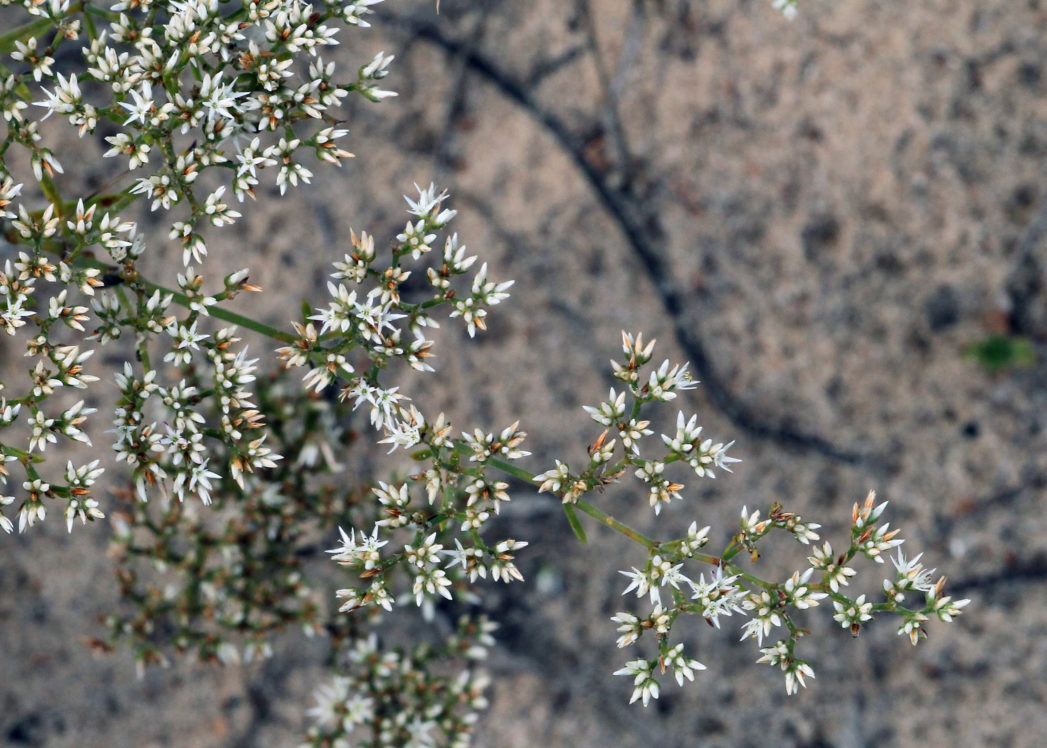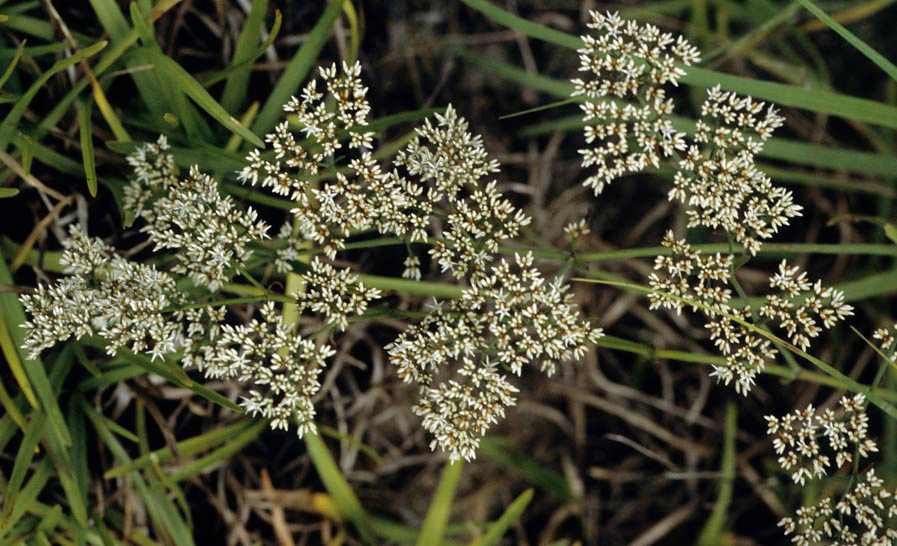Sandquares — Trick or Treat? Both!
Article by Claudia Larsen. Pictured above: Sandsquares (Paronychia rugelii) by Mary Keim
It’s time for Halloween decorations, parties and costume planning. But October is also a time of wildflower exuberance as fall bloomers put on showy displays along our roadsides and in nature parks. There is one wildflower that seems to be both a trick and a treat.
Sandsquares, or Rugel’s nailwort (Paronychia rugelii), is one of the most unusual wildflowers you will ever see. This short plant is easily overlooked as it blends into the sandy background where it grows low to the ground. I first came across this plant during a hike in the Ordway Preserve in Melrose, where it was growing in a tall pine xeric flatwoods restoration area. Although it is found only occasionally, populations may occur in dry sites and sandhills throughout the Florida peninsula, extending into Alabama and Georgia.
This herbaceous perennial grows from a taproot and rarely is more than 8 inches high. Its stalkless, stem-hugging leaves make it appear leafless, making flower clusters look like they’re floating on air. And those flowers will make you take a second look — the tiny, loose clusters seem to form perfect squares when viewed from above, which is crazy to most of us who have spent our lives looking at “round” flowers. Look closely, and you will notice that the square is composed of many small flowers without petals. What you actually are seeing are pointed sepals that form the calyx of each flower.
Sandsquares are in the the Caryophyllaceae, or pink family. Some interesting family members include catchfly (Silene spp.) and common chickweed (Stellaria spp.). Although it seems rare and unusual, the Atlas of Florida Plants lists 8 species of Paronychia that grow in a wide range of ecosystems. These species are identified by hairiness of stems and leaves and distinct sepal features. They bloom mostly in warmer months. This plant is named for botanist Ferdinand Ignatius Xavier Rugel, who explored Florida from 1843 to 1846 and collected nearly 1,000 specimens for herbariums.
Sandsquare seed is now available from the Florida Wildflower and Seed Growers Co-op. I started my seeds in a nursery tray by sprinkling them on top of soil. They germinated well, but were a little finicky when transplanted to the garden. I may have done some of them in by overwatering initially to get them established.
I now have sandsquares growing in two locations in my yard – one shady and one sunny. Both spots get late afternoon shade, and the plants seem to be thriving. As with all wildflowers that have taproots, well-drained soil is a must.
Sandsquares have become my new pet plant, and I visit them often and still wonder at their distinct shape. Many varieties of small bees visit the flat heads. I look forward to collecting my own seed and broadcasting directly in more garden areas for an unusual groundcover.
Claudia Larsen is the owner of Micanopy Wildflowers, a nursery specializing in Florida native wildflowers.


